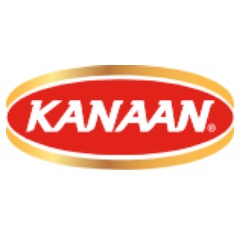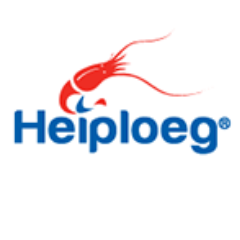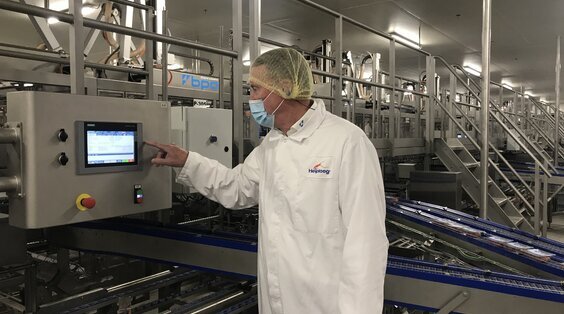
How end of line packaging automation supports Kanaan’s pricing proposition?
Kanaan doo
Director

Background
The origins of Heiploeg date back to before 1900, when the family-run businesses Heidema and Van der Ploeg were established in Zoutkamp, the Netherlands. In the early 1970s, the collaboration between Heidema and Van der Ploeg was transformed into a company named Heiploeg. Now Heiploeg has an ultramodern processing factory just outside of Zoutkamp in the Netherlands and specialises in processing chilled seafood products. Around 2,500 people work at Heiploeg and the company produces about 35 million kg of kitchen-ready products each year. This consists mainly of prawns and a select range other types of shellfish and crustaceans, including mussels and scallops.
Dirk-Jan Parlevliet, CEO of Heiploeg, explains: ‘As the leading prawn supplier, Heiploeg is number one in Europe in terms of prawns. We offer European consumers the opportunity to enjoy a broad range of high-quality prawn products made from prawns sourced throughout the world and distributed through retail and food service channels, wholesalers and food processing companies. And these markets are certainly extremely demanding and subject to change. Requirements for products and packaging are constantly being modified. And delivery reliability is absolutely critical for these types of companies.’

The challenge
Heiploeg’s turnover in tonnage has grown enormously since 2014. This growth forced Heiploeg to start automating the previously manual process of applying secondary packing to their products. The primary packing process had already been fully automated. But to remain competitive, changes had to be made in the secondary packing process.
Dirk-Jan Parlevliet clarifies: ‘In 2015, we started extending the automation of the packing process with Wraparound machines from Racupack (acquired in 2013 by BPA). These machines offered us a great deal of efficiency and flexibility The capability to pack products in different box constructions, both vertically and horizontally, was the main deciding factor for us. This was vital for us to be able to respond to future customer demands.’
To ensure the continuing positive growth within Heiploeg and at the same time to be able to capitalise on the variations in mixed packaging, while being flexible regarding the formats of carton sizes, and maintaining the high level of delivery reliability — the company was looking for a logistics concept that satisfied all of these requirements. Heiploeg wanted a solution through which the process could be further automated without sacrificing flexibility.
The solution
The process for the development of the new logistics concept within Heiploeg started with a purely theoretical idea, without knowing precisely what the implementation would look like. According to Dirk-Jan: ‘We didn’t request or purchase a ready-made concept. The solution, as it has now been implemented, is entirely the result of holding brainstorming sessions with three partners, whereby BPA continuously offered very constructive ideas. This caused a certain dynamic to develop the process, and we advanced a step further each time.’
Previously, Heiploeg always handled every production run completely order based. This allowed them to achieve a certain level of efficiency but, at the same time, there was also talk of some inefficiency. For each order, an entire series of machines had to be adjusted, which had a negative impact on the business’s production capacity. As Dirk-Jan explains: ‘During the many brainstorm sessions, we started to rethink things. Instead of conducting the entire production process based on order, we eventually switched to running a part of the production ‘on stock’. The larger production runs and reduced adjustment times gave us the capability to increase our productivity.’
'With this investment, I dare to say that Heiploeg finds itself in the Champion’s League'
Eventually we decided on a comprehensive solution from BPA, with the use of Spider 100 Case Packer, Gantry 100 and Wraparound 100. The Spider 100 ensures that the crates of consumer products, which are supplied from the MRP machines (production on stock), are loaded at high speed and with the correct precision. These crates are transported on a conveyor belt system to the cold storage. Crates are returned on demand (production on order) and are unloaded by Gantry 100 machines. This is an efficient solution for the unloading the crates, using four unloading robots for the four different flavours. After unloading, the products move through a mixing station and are delivered in the right mix to the BPA Wraparound 100 machines. These machines provide a high level of flexibility in packing formats so that the mixed types of packaging are packed in such a way that they quickly and easily satisfy the customer's demands.
The result
Dirk-Jan Parlevliet continues: ‘The technology and controls of the machines from BPA are simply very good. With this investment, I dare to say that Heiploeg finds itself in the Champion’s League. But the real issue was in the integration of these solutions with the other systems. That was quite a challenge. Here, BPA acted quickly and delivered a high performing end result. The professional approach and innovative flexibility of BPA has been instrumental for the success of this project, and BPA can be proud of that.’
Looking back, Dirk-Jan asserts: ‘The concept, which we have devised collectively, functions and is future-proof. Productivity is higher and flexibility has increased. And that is what is most important! However, we continue to develop (such as integrating new products, or forms of packing where sustainability is important), so having the capacity and flexibility to accomplish this is key. It is a continuous process, and that’s why the good mutual relationship we have with BPA is so important!’